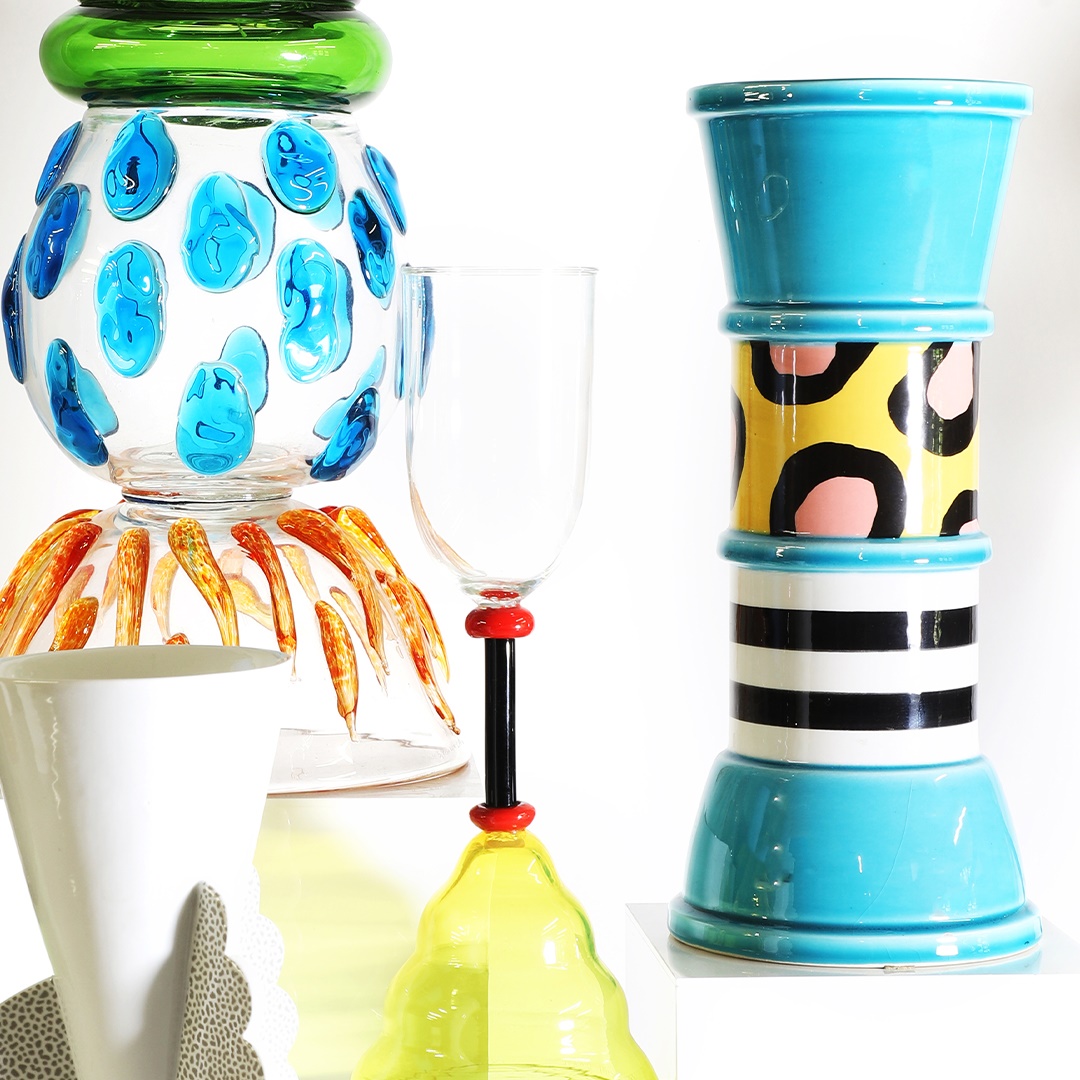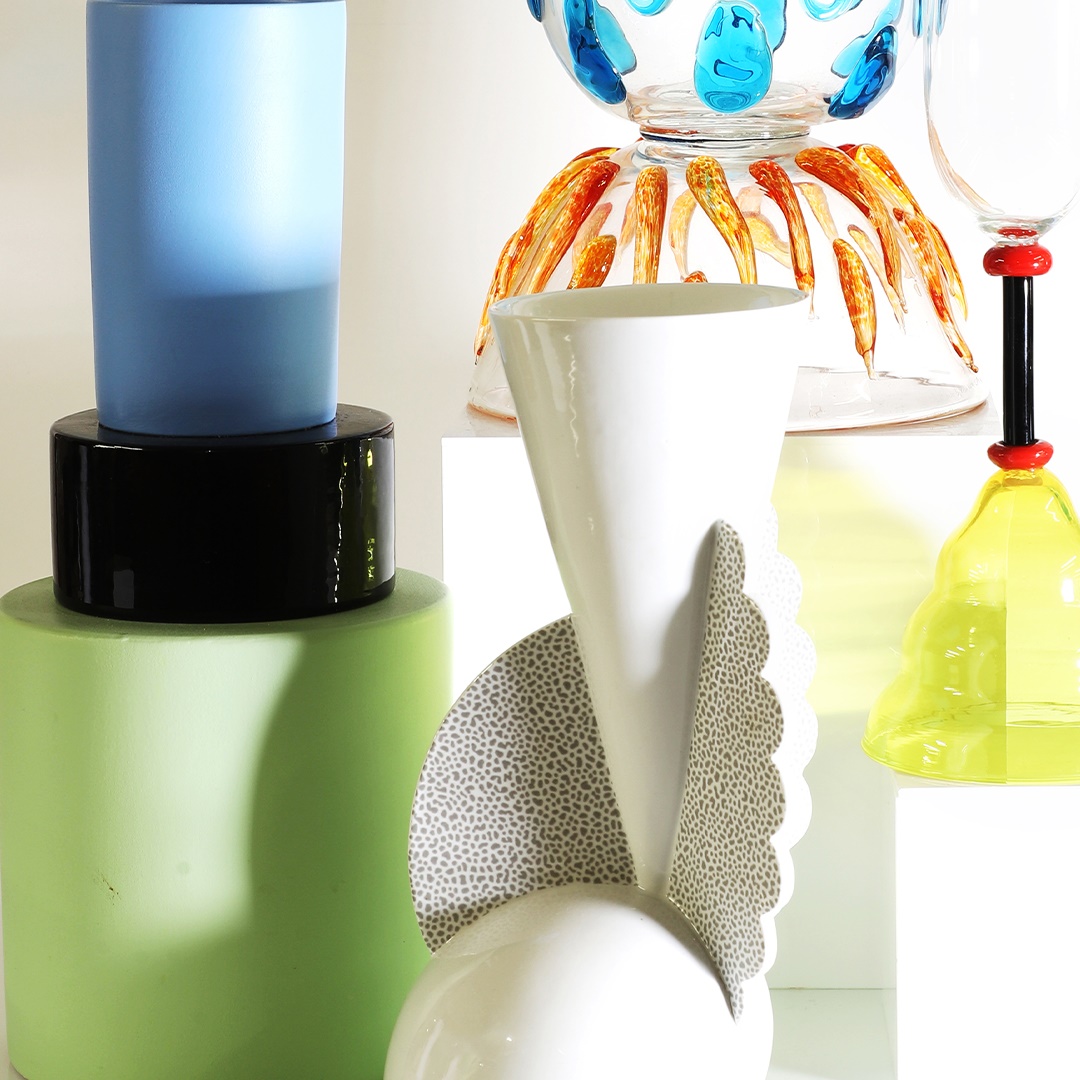

Despite being a short-lived movement of only seven years, pioneering designer Ettore Sottsass and his fellow postmodernists of the Memphis Group continue to define the landscape of contemporary design, with their witty and whimsical designs that, despite being designated a fad, continue to be a point in Design history that we love to revisit.
24 May 2024
VIEW AUCTION REQUEST A VALUATION CONTACT A SPECIALIST
In 1980, the visionary designer and architect Ettore Sottsass gathered a collective of contemporary creatives in his living room to debate the future of design. The 1970s had seen the evolution of Design traverse down a path of straight lines and hard angles, with brutalism and minimalism being the order of the day, a direct response to the superfluous and roomy designs of the 1960s, where form was far more liberal and softer (think Gaetano Pesce’s 'Up' series). Sottsass was concerned with this trajectory, claiming it took design away from the masses and that it had become too serious for its own good. With his twenty-two fellow visionaries in agreement, they all left the Sottsass apartment with their objective clearly defined. This marked the beginning of the Memphis Group, a movement within the larger context of postmodernism, which is characterised by its rejection of the modernist principles of simplicity and functionality, and its embrace of irony, ornamentation and historical references.

A three-month period of immense productivity began following that evening, which saw several designs and patterns conceived across glass, ceramics, furniture, lighting and decorative arts. Rather than looking forward, the group looked back throughout design history, borrowing the liberal and exuberant shapes of Art Deco and the bold colours of 1950s Pop Art, fusing these with contemporary materials such as MDF, plastic and printed laminates. However, the movement’s diachronic approach to design - unveiled at the 1981 Salone del Mobile in Milano and initially conceived as a commentary on their contemporaries - inadvertently ended up shaping a decade of bold colours and abstract shapes that we still associate as stereotypically 1980s to this day.

Is this what keeps us returning to Memphis, time and time again, particularly with current generations basing their pop-cultural and art historical compasses around nostalgia, recycling and celebrating humanity’s pop-cultural footprint? I never lived through the Memphis era (nor the 80s, for that matter), yet it fills me with a profound sense of zeitgeist for the 1980s and the cradle of postmodernism whenever I engage with a piece. This feeling may be due to the quintessentially 80s aesthetic of Memphis, inevitably making it the source material for any non-Memphis-80s-influenced piece of contemporary design we may encounter, allowing us to trace its lineage back to its origin. It works much like a music sample or an Easter egg in a movie or book – we connect with that particular reference on a contemporary level, enabling us to comprehend its source material and appreciate its impact on modern culture.

Memphis was never meant to be put on a pedestal; it was intended for the consumer, for everyday use and enjoyment. Yet, with its growing commercial success throughout the 1980s, the group’s ethos became evermore difficult to uphold. For that reason, Sottsass left the group in 1985, with his remaining collaborators officially disbanding two years later. In its brief seven-year period, however, the group carved out an entirely new direction in the history of design and it continues to define a decade of aesthetics that are still celebrated to this day. Collectors of Memphis pieces have included notables such as Karl Lagerfeld and David Bowie, names that have ensured that pieces are still fiercely competed over at auction to this day. At Sworders, we are delighted to be offering several pieces by Ettore Sottsass from throughout his extensive career in our forthcoming Design sale, along with several pieces of his Memphis collaborators and subsequent disciples thereof. This continued engagement of new design springing forth from Memphis is a testament to its necessity to emerge when it did, as whilst not (initially) commercially successful, it celebrated design as fun, daring and provocative, traits that make designers want to walk in Memphis again and again.

design@sworder.co.uk | 01279 817778
December's Fine Interiors auction features the second part of a remarkable European private collection, fronted by three Roman marble torsos.
20 November 2024
Venice, with its labyrinth of canals, iconic bridges, and breathtaking architecture, has captivated artists for centuries. This city, often described as a floating jewel, has been a muse for painters from the Old Masters to contemporary creators, each capturing its essence in unique and intimate ways.
15 November 2024
John Black at Sworders recently had the pleasure of valuing a remarkable local collection centred on a unique passion: memorabilia of Queen Victoria.
14 November 2024